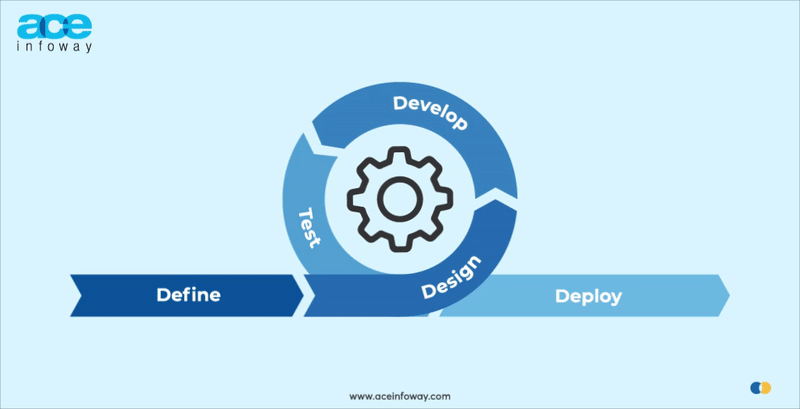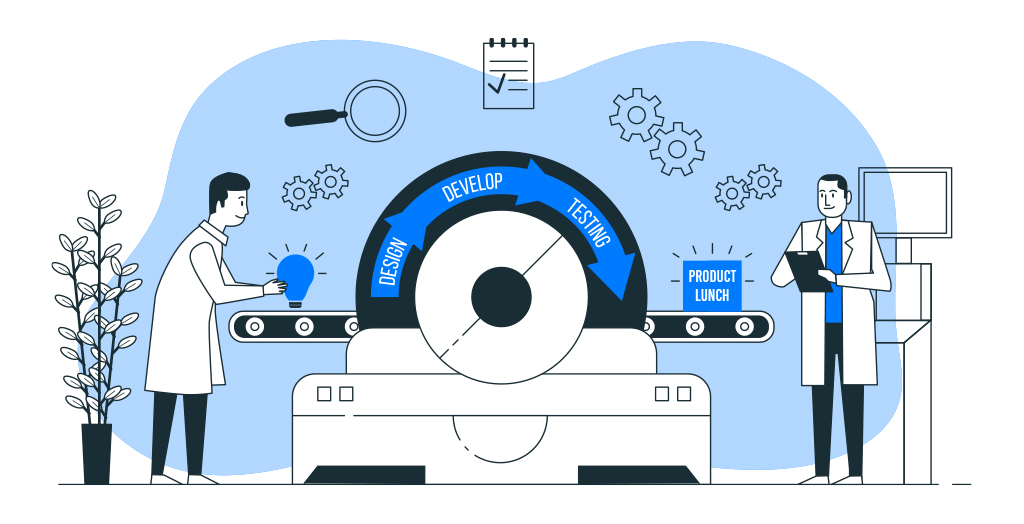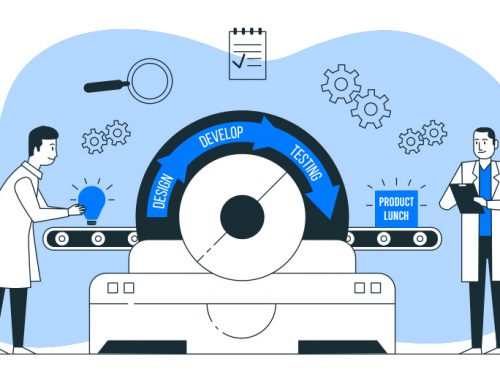Table of Contents
2023 is the year of change and quick innovation. Software Development Companies require their processes to be concise, fast, and responsive to customer needs and build digital products at a pace that meets the demands of customers. Agile software development is a preferred choice of companies to develop a software solution or digital products to meet the customers’ demands in 2023 and beyond.
Agile SDLC is now one of the most widely used software product engineering processes, with nearly every technology company using it. It’s because of the flexibility and growth of the Agile development methodology.
More than 71% of U.S. companies are now using Agile development methodology and they’ve experienced an average 60% growth in revenue and profit.

The Ultimate Checklist for Building An Incredible SaaS Product
Get your free copy
What is Agile SDLC [Agile Software Development Life Cycle]?
The stages of the agile software development life cycle include many sprints in which a software product undergoes 4 different development phases from start to finish. A sprint is a set period during which specific work must be completed and made ready for review. Each sprint has these 4 phases as an iterative.
The agile development process works by breaking down projects into little chunks of user functionality, prioritizing them, and delivering them in 2-4 cycles known as Sprints. An entire agile software development life cycle is completed in a single Sprint (2-4 weeks). These 4 phases are iterative per sprint / per deliverable.
Myths of Product Development Projects
So, the agile software development life cycle has 4 stages that iterate in each sprint as below:
- Sprint Planning
- Daily Scrum
- Sprint Review
- Agile Retrospective
1) Sprint Planning:
The initial stage of the sprint where the scrum master or product owner discusses top priority with the team and defines what can be delivered in the sprint and how that work will be completed.
2) Daily Scrum:
Led by the scrum master, the team comes together for short daily meetings, in which they discuss what they have completed, what they are working on, and any issues that are blocking them to achieve the sprint goal.
3) Sprint Review:
The Scrum event that occurs right before the retrospective, in which the team gathers to examine completed work and determine whether any additional modifications are required.
4) Agile Retrospective:
The team discusses what they can do to improve processes. An important goal is continuous improvement and implementation of lessons learned in the next sprints.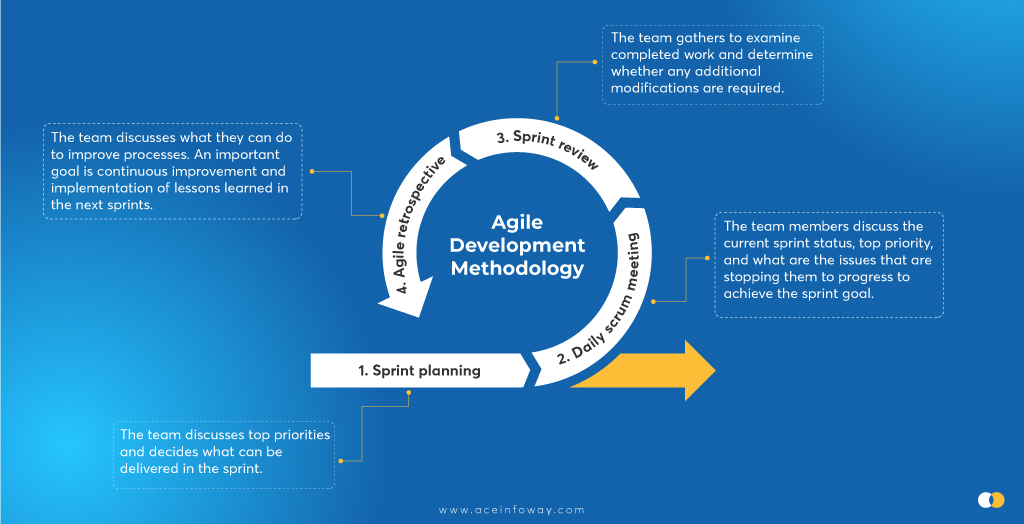
The agile software development methodology is the most efficient way to streamline product engineering process and meet customer needs. Agile SDLC divides your software development process into smaller pieces known as sprints, which you work on for 1-2 weeks at a time. This helps you to gradually incorporate customer feedback to build a better product faster.
Any software product development approach that adheres to the Agile Manifesto’s concepts is referred to as agile software product engineering. The Agile Manifesto is a document that presents the key values and principles behind the Agile software development philosophy and assists development teams in becoming more productive using Agile SDLC methodology.
“Intelligence is the ability to adapt to change.” – Stephen Hawking
The agile process helps developers build software in incremental, quick cycles, following their values and ideas, rather than releasing it all at once near the end.
Developers deliver a workable software solution at the end of each Sprint, and the customer evaluates its performance. Each Sprint’s lessons are documented in retrospectives and applied in subsequent iterations.
As a result, the next Sprint will be an upgraded version of the previous Sprint. In this way, the products are constantly enhanced.
Want to adopt Agile SDLC in your project?
Connect with our Agile experts NOW!
Why Use Agile Software Development Life Cycle [Agile SDLC] in 2023?
When an agile software development life cycle process is implemented properly, it allows teams to drastically enhance the quality of their software with each release. Not only that but Agile SDLC also enables teams to quickly adjust to change.
Agile product engineering methodologies allow companies to build precise products from scratch. Agile SDLC is the best software development methodology because it helps examine and improve products as they progress through different phases of software product engineering. This way you can build valuable software products that are highly competitive in the market.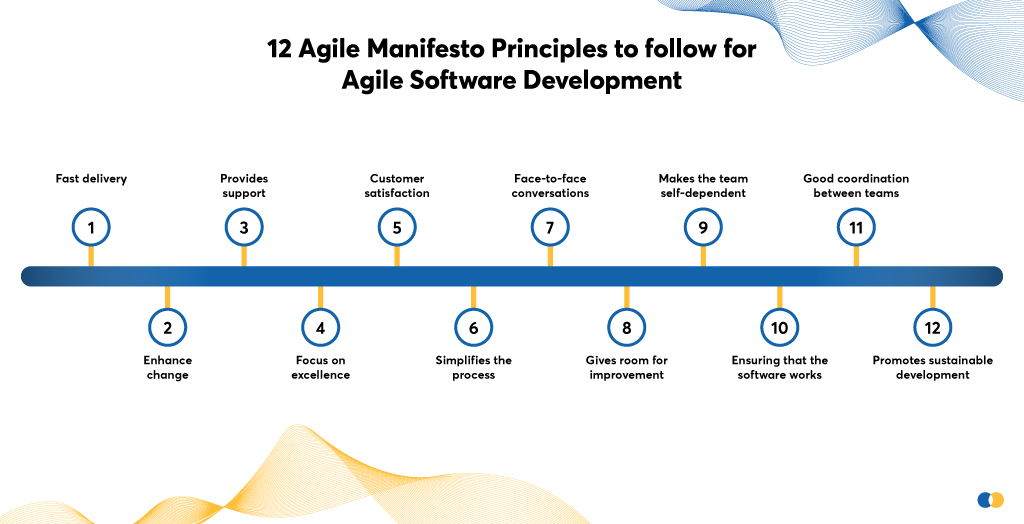
The following are the principles of the Agile Manifesto that must be understood to apply Agile in any company as part of the Software Development Life Cycle:
- Fast delivery
- Enhance change
- Provides support
- Focus on excellence
- Customer satisfaction
- Simplifies the process
- Face-to-face conversations
- Makes the team self-dependent
- It gives room for improvement
- Good coordination between teams
- Ensuring that the software works
- Promotes sustainable development
As per Digital ai 15th State of Agile Report, what are the most essential reasons for adopting Agile SDLC within your team or organization?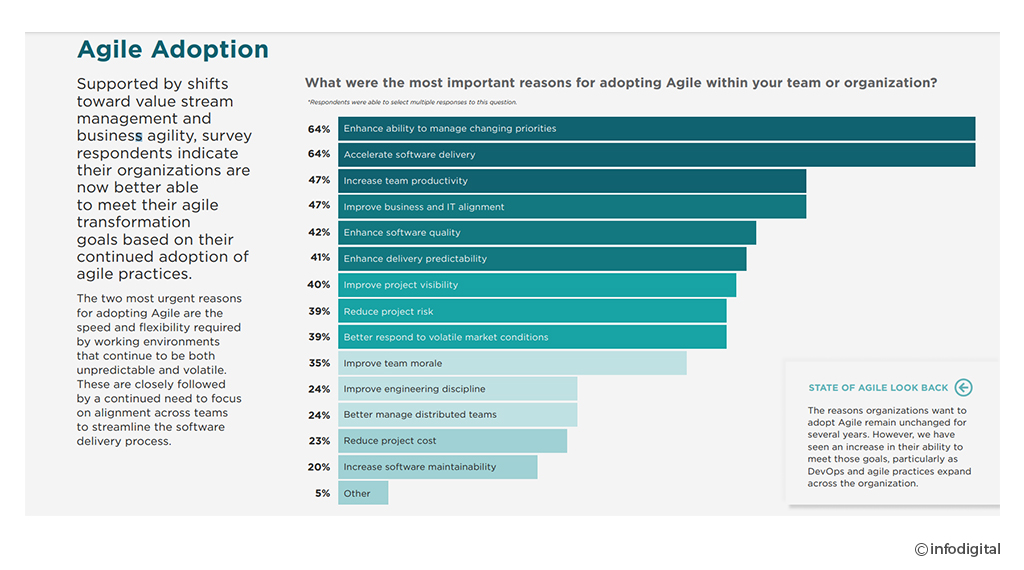
6 Key Factors to Drive Critical Success in Agile Software Development Life Cycle
- Customer-driven approach
- Focus on solutions, not just software
- Applying an experimental approach
- Focus on incremental releases
- Embrace and manage the change
- Strategic planning and tactical implementation
1) Customer Driven Approach:
The software product management decisions should be driven by the needs of customers. The potential desires which customers themselves may not be aware of should be unearthed while making product decisions.
2) Focus on Solutions Not Just Software:
Software product engineering is about solutions and not just software products. The fill value streams the product being developed is part of, from beginning to end, needs to be understood from the customer’s point of view. The complete customer experience needs to be addressed.
3) Applying Experimental Approach:
The requirements may not be fully clear at the beginning. The customers may not be completely sure about what they need from the Agile software product. Hence, an experimental approach is a better way than getting complete requirements. A minimum viable product (MVP) needs to be created to get something in front of potential customers to determine what they exactly want.
4) Focus on Incremental Releases:
Releasing small increments of the product enables to reduce the feedback cycle with the customers. This enables quick learning among the software product development team which in turn helps in quick reaction time for customers.
5) Embrace the Change Management:
Customer needs and desires keep changing. New competitors enter the market with different or improved offerings. New technologies and platforms are introduced and then evolved. The success of product management is in accepting and embracing the change. The focus should be on adopting flexible and lightweight strategies for your agile software product development process.
6) Strategic Planning and Tactical Implementation:
A agile software product should be planned strategically in the long term yet implemented tactically in the short term. The agile product engineering scrum implementation is more suited for this philosophy.
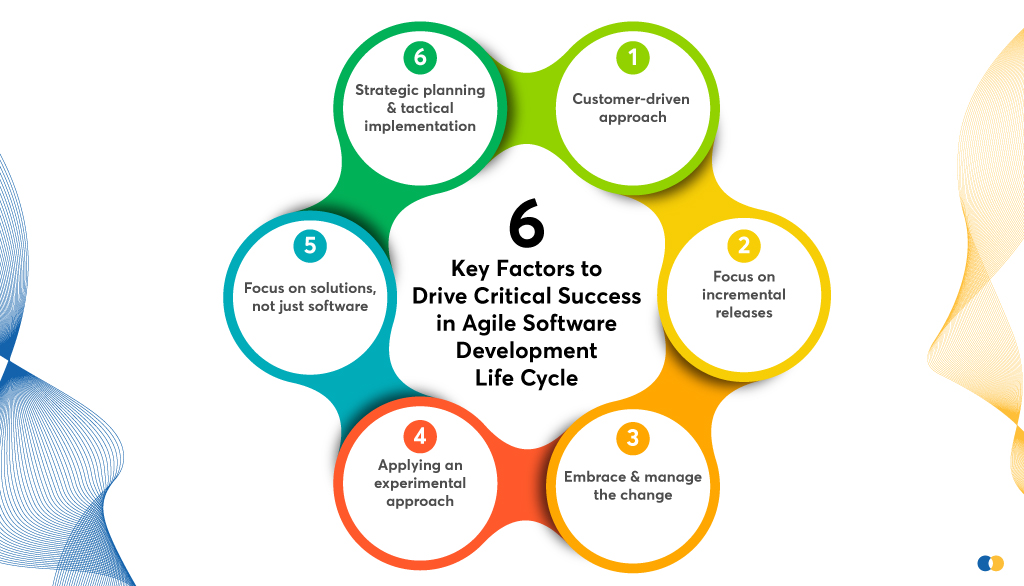
Now you know the importance and factors that affect software development, here are insights on agile software development practices.
Agile Software Development Best Practices to Follow
When talking about agile software development practices, the below pointers can be considered as a guideline. The way you apply them depends on your specific requirements, market gap, and resource availability. After all, practicing agile is a never-ending process, so you should keep experimenting to determine what works best for you.
1) Prioritize customer engagement and plan on multiple levels:
One of the most important Agile practices is to plan at numerous organizational levels, from big objectives to individual tasks. Rather than having a single big planning phase, Agile teams spread their planning out over the life of the project and only prepare for the short term. The planning process might begin again once a deliverable has been released to the customer.
Furthermore, Agile places a high value on customer collaboration because it is the driving force behind the strategy. In other words, Agile software development teams create strategies that focus on outcomes that provide value to customers rather than output.
This practice of planning on multiple levels and prioritizing customer engagement creates a highly flexible planning approach. Every level transmits information to the one above it whenever the requirements change. This allows teams and managers to make minor changes to their plans rather than doing major reworks, which can result in project failure.
2) Active involvement of each team member:
Management in companies must accept the active involvement of each team member for the Agile software development planning process to work well. This means that team members should be encouraged to come up with their strategies based on only a few unrefined details.
Agile managers are in charge of defining a product or service vision, ensuring that it is well understood, and engaging in high-level planning of their software product engineering. When it comes to establishing a fine-grained path to accomplishing that vision, this is where individual team members become actively involved in the process.
This practice has several benefits over the traditional one. It includes actual subject matter experts (team members), giving them a sense of belonging and resulting in more precise plans.
5 Key Trends Changing New Product And Service Development
3) Use Probability and Time Ranges:
Another Agile practice is to plan in ranges rather than dates.
Traditionally, project managers have relied on deterministic estimates to forecast the future. When it comes to a knowledge-based workplace, this approach is extremely problematic. As a result, saying that a deliverable would be completed by a particular date is unrealistic.
Agile software development teams use time ranges and assign a specific probability based on their historical data. For example, it’s much more practical to predict that a feature will be completed between 5 and 8 days with an 85% probability than to promise an exact date.
4) Planning and Execution to Enable Transparency:
Last but not least, by planning and execution, you should try to provide transparency throughout the agile software development process. This will ensure that you can see the big picture, track progress easily, and respond to changes quickly.
You should look to connect multiple workflows to execute this in practice. You may, for example, have a process for planning your projects and another for visualizing the particular tasks that each team member is responsible for.
Indeed, the structure will differ depending on your procedure and the scope of your project. Nonetheless, the concept of complete transparency in the process and evaluating plans against their actual execution in real-time is important.
As a result, you will foster an open environment and enhance project collaboration among team members and other key stakeholders.
Conclusion
Software development needs the right skill set of resources with the right methodology to be applied. The method you choose to work in the company must have the capability of handling the project.
The main advantage of implementing Agile software development methodology to your software product is a faster return on investment (ROI). It improves the quality of deliverables and copes better with frequent changes as per customer demands. As it is driven by business objectives, you can present your team and customers with a comprehensive understanding of the final goal and a clear vision of the project’s direction.
Aside from that, faults in the project can be spotted and corrected early on, saving time and money. The above information and data make it clear that Agile is a powerful methodology that helps you keep project defects and failures at bay.
Want to adopt Agile SDLC in your project?
Connect with our Agile experts NOW!









